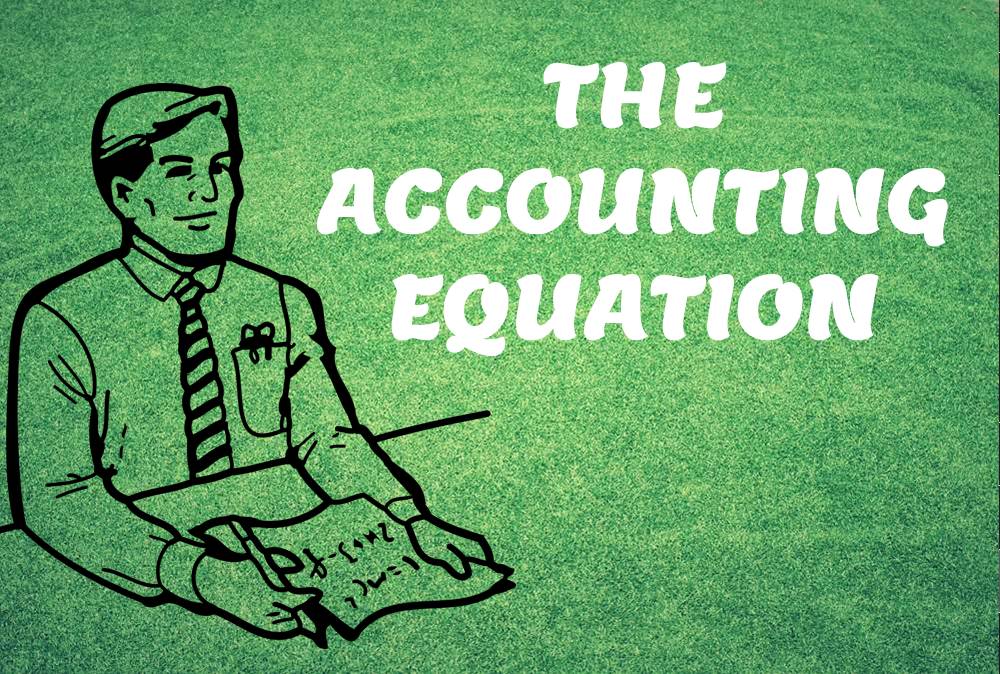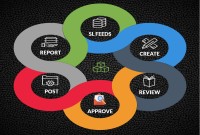- Home
- Business Processes
- Industry Knowledge
- Aerospace Industry
- Automotive Industry
- Banking Domain
- BFSI Industry
- Consumer/ FMCG Industry
- Chemicals Industry
- Engineering & Construction
- Energy Industry
- Education Domain
- Finance Domain
- Hospitality Domain
- Healthcare Industry
- Insurance Domain
- Retail Industry
- Travel and Tourism Domain
- Telecom Industry
- Leadership Skills
- eLearning
- Home
- Business Processes
- General Ledger (Record to Report)
- The Accounting Equation
The Accounting Equation
In this article we will help you understand the double-entry accounting system and state the accounting equation and define each element of the equation. Then we will describe and illustrate how business transactions can be recorded in terms of the resulting change in the elements of the accounting equation.
The Five Account Types:
Double-entry accounting uses five and only five account types to record all the transactions that can possibly be recorded in any accounting system. These five accounts are the basis for any accounting system, whether it is a manual or an automated accounting system. The five account types are the following:
Balance Sheet Accounts:
In accounting, the economic resources of a business are categorized under the terms of assets, liabilities, and owner's equity. These terms also refer to the three types of accounts in which a business records its transactions.
1. Assets:
Things of value that is owned and used by the business. Examples of assets include cash, land, buildings, and equipment.
2. Liabilities:
Debts that are owed by the business. These are the rights of the creditors or third parties over the assets of the business. Examples of liabilities include amounts due to suppliers, loans payable back to banks.
3. Equity:
The owner's claim to business assets. These are the rights of the owners over the assets of the business. Examples include capital invested by the owners, the shares subscribed by the public or the residual profit made by the business last year.
Profit and Loss Accounts:
The operations of the business can either result in profit or loss. It may increase the economic value over a period of time in case of profit or might decrease the economic worth in case of loss. All such activities can be recorded using two types of profit and loss accounts:
4. Revenue:
The amounts earned from the sale of goods and services. Examples include sales, interest received on bank deposits, a commission earned by the business.
5. Expenses:
Costs incurred in the course of business. Examples include purchases made for material, payment of rent, expenses for employee costs.
The balance sheet accounts are permanent accounts that carry a balance from year to year, like checking accounts, accounts receivable, and inventory accounts. The profit and loss accounts are temporary accounts that track revenues and expenses for a yearlong fiscal period and are then closed, with balances transferred to an equity account.
There can be thousands of sub-types; known as natural accounts which help in further classifying the nature of the transaction, but they all belong to one of the above lists, as practically all financial transactions can be recorded using these five types of accounts.
The Economic Impact of Transactions:
Businesses conduct transactions by exchanging goods or services for money. Transactions can take various forms, depending on the company, but whatever kind of transaction has occurred; it impacts the business's resources. The resources of a business refer to its supply of goods, services, information, or expertise that allows the business to operate and grow.
Businesses exchange items of equal value, real or perceived. Imagine that an exchange is like balancing a scale—the left side goes down (a service is given) and the right side reacts (cash is received) to maintain the balance of the scale. The exchange of goods or services, information, or expertise has an impact on the one side of the scale which is compensated by the value that the business gets in exchange that has an impact on the other side of the scale. The perceived value of both these impacts should be equal on the scale.
Accounting uses a technique to show how a transaction changes the business's resources while maintaining a balance, or showing the equal value of the exchange. The accounting equation is a tool that is applied throughout accounting activities to show how transactions affect the asset, liability, and owner's equity accounts.
The Accounting Equation:
The resources owned by a business are its assets. Examples of assets include cash, land, buildings, and equipment. The rights or claims to the assets are divided into two types:
- The Rights of the Creditors
- The Rights of the Owners
The rights of creditors are the debts of the business and are called liabilities. The rights of the owners are called owner’s equity. The following equation shows the relationship among assets, liabilities, and owner’s equity:
- Assets = Liabilities + Owner’s Equity
- This equation is called the accounting equation. Liabilities usually are shown before the owner’s equity in the accounting equation because creditors have first rights to the assets. Given any two amounts, the accounting equation may be solved for the third unknown amount. The equation shown above represents the format seen on a balance sheet.
The profit and loss accounts (representing revenues and expenses account types) also affect equity. Revenues from the sale of goods and services increase equity, while expenses incurred in the course of business decrease equity. Therefore, the accounting equation can be expanded to assets equal liabilities plus equity plus revenues minus expenses.
- Assets = Liabilities + Owner’s Equity + Revenues - Expenses
- Every transaction that has an accounting impact, will affect at least two accounts out of the five accounts explained above. If a transaction causes one side of the equation (assets) to increase, then the other side of the equation (liabilities or owner's equity) must also increase to keep the equation in balance.
You can apply the accounting equation by determining that the total of the asset accounts equals the total of the liability accounts plus the total of the owner's equity accounts. A double-entry accounting system will record the appropriate debits and credits, and track the changes to assets, liabilities, equity, revenue, and expense accounts. Keep this fundamental rule of accounting in mind when you need to determine how a transaction affects your business's resources.
Related Links
You May Also Like
-
McKinsey 7S Framework is most often used as an organizational analysis tool to assess and monitor changes in the internal situation of an organization. The model is based on the theory that, for an organization to perform well, seven elements need to be aligned and mutually reinforcing.
-
For any company that has a large number of transactions, putting all the details in the general ledger is not feasible. Hence it needs to be supported by one or more subsidiary ledgers that provide details for accounts in the general ledger. Understand the concept of the subsidiary ledgers and control accounts.
-
Internally, an organization can be structured in many different ways, depending on their objectives. The internal structure of an organization will determine the modes in which it operates and performs. Organizational structure allows the expressed allocation of responsibilities for different functions and processes to different entities such as the branch, department, workgroup and individual.
-
An organizational design is the process by which a company defines and manages elements of structure so that an organization can control the activities necessary to achieve its goals. Good organizational structure and design helps improve communication, increase productivity, and inspire innovation. Organizational structure is the formal system of task and activity relationships to clearly define how people coordinate their actions and use resources to achieve organizational goals.
-
What is a Business Eco System?
The goal of a business is to generate capital appreciation and profits for its owners or stakeholders by engaging in provision of goods and services to customers within the eco system/framework governed by respective laws(local/international). The eco system involves various entities that the business works with for delivery of a product or service.
-
Generally Accepted Accounting Principles define the accounting procedures, and understanding them is essential to producing accurate and meaningful records. In this article we emphasize on accounting principles and concepts so that the learner can understand the “why” of accounting which will help you gain an understanding of the full significance of accounting.
-
In this article, we will explain the general Ledger journal processing flow from entering journals to running the final financial reports. Understand the generic general ledger process flow as it happens in automated ERP systems. The accounting cycle explains the flow of converting raw accounting data to financial information whereas general ledger process flow explains how journals flow in the system.
-
A subsidiary is a company that is completely or partly owned by another corporation that owns more than half of the subsidiary's stock, and which normally acts as a holding corporation which at least partly or wholly controls the activities and policies of the daughter corporation.
-
Business Metrics for Management Reporting
Business metric is a quantifiable measure of an organization's behavior, activities, and performance used to access the status of the targeted business process. Traditionally many metrics were finance based, inwardly focusing on the performance of the organization. Businesses can use various metrics available to monitor, evaluate, and improve their performance across any of the focus areas like sales, sourcing, IT or operations.
-
GL - Unearned / Deferred Revenue
Unearned revenue is a liability to the entity until the revenue is earned. Learn the concept of unearned revenue, also known as deferred revenue. Gain an understanding of business scenarios in which organizations need to park their receipts as unearned. Look at some real-life examples and understand the accounting treatment for unearned revenue. Finally, look at how the concept is treated in the ERPs or automated systems.
Explore Our Free Training Articles or
Sign Up to Start With Our eLearning Courses

About Us
Learning
© 2023 TechnoFunc, All Rights Reserved








